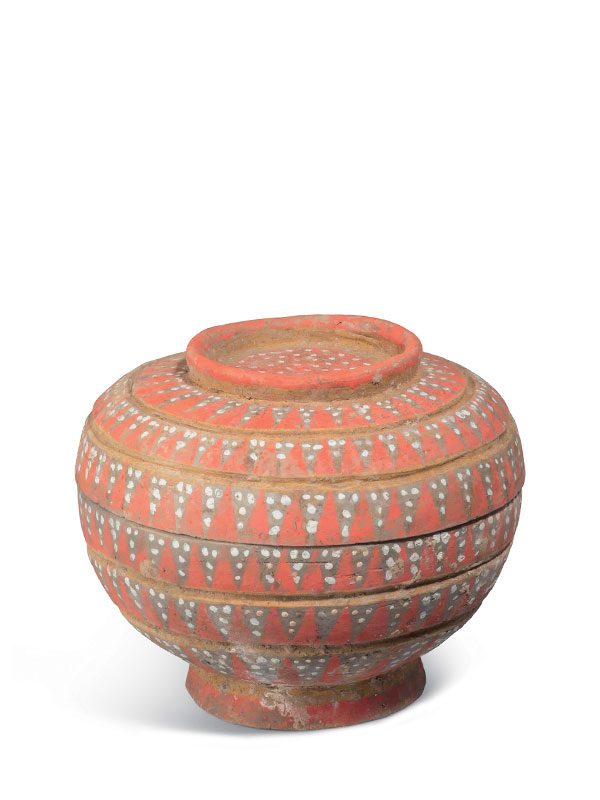Painted pottery box and cover
A grey pottery box with cover, the compressed bulbous body of the box supported on a short, splayed foot. The domed cover is surmounted by a raised circular rim. The body and the cover are symmetrically divided into three horizontal bands by concave grooves. The raised band between the grooves is painted in bright red pigments with a geometric design of triangles, interspersed with white dots in between. The flat top of the cover is painted with a circular design of white dots on a red ground. The foot and the rim are painted in red.
The cover of this robustly potted box is designed to serve as a bowl when inverted. Painted designs on unglazed Han dynasty pottery usually imitate those found on contemporary lacquer objects, which are mostly abstract. A black lacquer box painted in red with wave and dot patterns, unearthed from a Han dynasty tomb at Fenghuangshan, Jiangling, Hubei province, is closely comparable in both decoration and size. It is now in the collection of the Regional Museum of Jingzhou, Hubei province.[1] Pottery boxes of similar shape, proportions and painted with abstract designs are in the Meiyintang collection[2] and in the collection of the Asian Art Museum of San Francisco.[3]
- Teng, Rensheng, Lacquer Wares of the Chu Kingdom, The Woods Publishing Company, Hong Kong, 1992, no. 89, p. 81
- Krahl, R. Chinese Ceramics from the Meiyintang Collection, Volume One, Azimuth Editions, London 1994, no. 72, p. 61
- Li, He. Chinese Ceramics-the New Standard Guide, from the Asian Art Museum of San Francisco, Thames and Hudson, London, 1996, no. 52, p. 70

